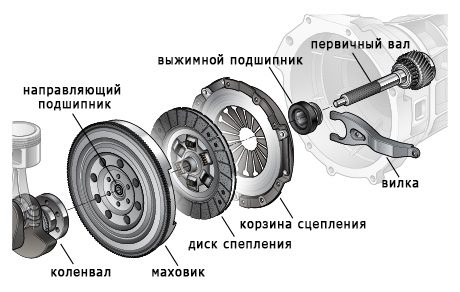
Clutch thrust bearing - signs of failure
Content
The decoupling system in a car consists of many elements that we usually only hear about when visiting a mechanic. These include, but are not limited to, a clutch disc, thrust bearing or thrust bearing. The latter part, although most often it can be used for the entire life of the clutch, can sometimes fail and show fairly obvious signs of wear. How to quickly get to know them and what to do if a bearing is out of order in our car?
What will you learn from this post?
- What is the job of a clutch bearing?
- Symptoms of a damaged placenta - what you need to know?
- Do they always need to be replaced when diagnosing a malfunction?
Shortly speaking
The proper functioning of the clutch in our vehicles is based on the collaboration of many elements that we do not think about every day. One of them is the clutch thrust bearing. This is a relatively simple part that plays an important role in disengaging a car's clutch. Learn about the symptoms of a damaged clutch bearing and what to do if it fails.
What do I need to know about a thrust bearing?
A thrust bearing, also known as a release bearing, is a fairly simple but extremely important element of the release system. Center of the grip axis (known as the claw) responsible for turning it off by transferring the force from the clutch pedal and hydraulic actuator directly to the diaphragm spring. The clutch bearing presses the diaphragm spring and at the same time relieves stress from the disc. subject to heavy loads... Already at the stage of assembly, it is known whether it will work properly in the future. It all depends on the correct setting of both the bearing and the clutch.
Modern thrust bearings are made from materials that are resistant to damage and high temperatures, and incremental improvements (such as a bearing system integrated with the drive, called a central slave cylinder) make it is one of the most reliable components of the entire exhaust system. However, there are failures, the symptoms of which are hard to miss - so you should know how to interpret them correctly.
Thrust bearing - symptoms and signs of wear
The most common sign of release bearing wear is characteristic noise and strange sounds, incl. rumbling or rattling... They intensify when the clutch is disengaged (i.e. when the clutch pedal is depressed) and usually disappear when the clutch is released. Slightly less often you can experience rough operation of the clutch pedal or increased problems with changing gear ratios, which can already significantly complicate the daily use of the car.
Thrust bearing in a deplorable state - what to do?
Many drivers wonder if it is possible to drive with a failed thrust bearing. The answer is yes, you can, provided the symptoms are limited to the aforementioned transmission noises. Then it is worth waiting out this period and Delay replacing the thrust bearing until a new clutch system is installed.... This is mainly due to financial problems, since installing a new bearing involves removing the gearbox and the costs are slightly lower than if the entire exhaust system was replaced. Thus, it is completely unprofitable to replace the thrust bearing and clutch separately. twice the labor cost in the workshop can unnecessarily reduce our wallet.
The release bearing, although designed for intensive work and withstands (like all clutches) a mileage of up to 100 km, is not an indestructible element. If the malfunction is serious and the extent of the damage makes it difficult or impossible to drive, the thrust bearing must be replaced immediately. This is especially true for vehicles with a CSC central slave cylinder. (Concentric Slave Cylinder) in which the hydraulic cylinder and bearing form a single component. In extreme cases, failure of the clutch bearing can completely prevent disengagement and, as a result, gear shifting and further movement. In such situations, contact a mechanic immediately.
Clutch bearing failures and failures are rare and are usually associated with normal vehicle use. However, it is worth remembering that they happen more often. drivers who tend to abuse the clutch pedal... This is especially true for stopping at traffic lights, when we unnecessarily turn off the car by keeping the pedal depressed.

New clutch bearing? Take a look at avtotachki.com
Check the offer at avtotachki.com if you need new parts for your four wheels. You will find here, among other things, thrust bearings from LUK, one of the most renowned manufacturers of automotive components, as well as exhaust system components for vehicles with a central slave cylinder. The choice is rich, so you will definitely find what you are looking for!
Also check:
The clutch remains in the floor. What are the causes of clutch failure?
Signs of clutch wear - loud operation, jerking, slipping
Author of the text: Shimon Aniol
,